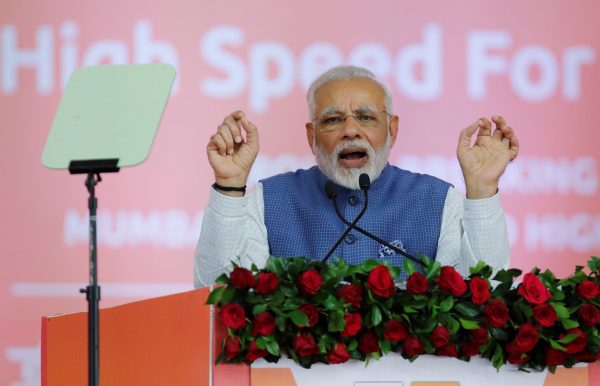Similarly, a recent issue of the Financial Times argued that the economic boom of the past two years is wobbling, largely due to serious structural problems from which the country is unlikely to recover soon.
Government officials disagree. Amit Shah, president of the ruling Bharatiya Janata Party (BJP) recently said ‘The BJP government that took power three years ago has completely transformed the thought process of the people and has been successful in creating brand India’. Finance Minister Arun Jaitley has also claimed that ‘no government in India has reformed as much as this one’.
So which view is correct? The answer depends on where you look.
If we are talking about macroeconomic reforms then Modi deserves credit. His ‘Make in India’ campaign — together with the Skills India, Digital India and Smart Cities campaigns — has helped attract a record amount of foreign direct investment, albeit from a low base. India still ranks a low 130 among the 189 countries in the World Bank’s Ease of Doing Business Indicator.
Looking further afield, similar success is harder to find. For instance, Modi’s ‘boldest’ reform was the unexpected demonetisation of large-value bank notes in November 2016. But recent evidence suggests that the costs, namely lower economic growth, have outweighed the benefits of digitalisation and control of ‘black money’ and corruption.
The introduction of the Goods and Services Tax (GST) had been under discussion for several years in India. While the earlier government failed, Modi was successful in getting a consensus to implement the GST on 1 July 2017. The complexity of the system has led some analysts to reduce the projected growth stimulus of this policy.
Progress is also lacking on the microeconomic reform front. Microeconomic reforms, such as sectoral and second generation reforms primarily relating to governance and institutions, underpinned Modi’s campaign pledge of ‘minimum government, maximum governance’.
The much-discussed privatisation of state-owned enterprises has been slow. The government has also lagged in the provision of basic services to the private sector such as an efficient and clean public administration system, education, healthcare and a functioning market for land and labour.
A new bankruptcy law introduced in May 2016 is an area where some action has occurred. But even this law cannot be fully effective until the judicial system is reformed. This may take some time given that there is a backlog of 24 million pending cases, nearly 10 per cent of which have been waiting for over a decade.
Aside from strengthening the Prime Minister’s Office, Modi has done little to reform the public administration or the civil service system. Governance indicators published by the World Bank, which assess government effectiveness, control of corruption, rule of law and regulatory quality, show that India ranks far behind many East Asian countries.
India’s educational standards are also concerning and the country lacks a capable and healthy workforce. Much of the education and healthcare available is provided by the private sector because of the poor quality of public services.
Furthermore, in many Indian states firms with more than 100 workers must seek government approval to hire and fire workers. As a result, many resort to contract workers or simply choose to forego economies of scale by remaining small. During Modi’s first year in office, several states sought to partially liberalise their labour markets. But now it looks like these efforts have come to a standstill. Land issues are also yet to be addressed
Slow progress in microeconomic reforms means that the government has been unable to create an enabling environment for the private sector. This could result in private sector investment dipping even further. This is particularly concerning given that India’s economy grew by only 5.7 per cent in the quarter ending 30 June 2017, its slowest growth rate since 2014. It seems that progress in microeconomic reforms are unlikely to eventuate until after the 2019 election. As in the past, an inefficient public sector will continue to be all-pervasive in the Indian economy.
Pradumna B. Rana is Associate Professor and Coordinator of the International Political Economy Programme in the Centre for Multilateralism Studies (CMS) at the S. Rajaratnam School of International Studies (RSIS), Nanyang Technological University, Singapore.
A version of this article was originally published here on RSIS.

